Mansurul Bhuiyan
Using Structured Representation and Data: A Hybrid Model for Negation and Sentiment in Customer Service Conversations
Jun 11, 2019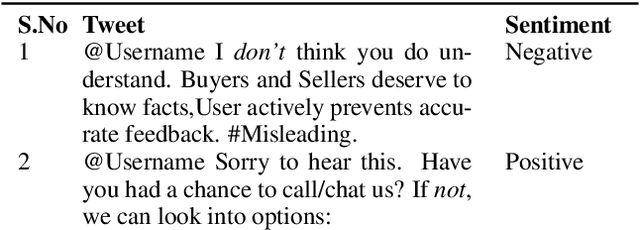
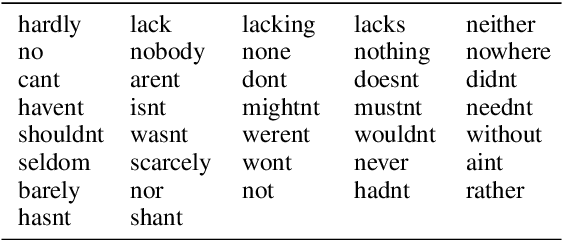
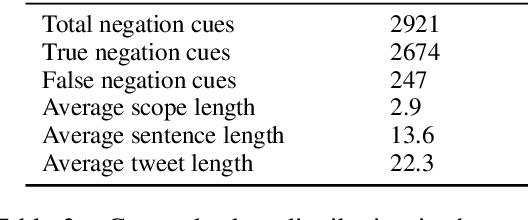
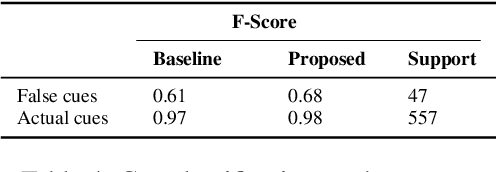
Abstract:Twitter customer service interactions have recently emerged as an effective platform to respond and engage with customers. In this work, we explore the role of negation in customer service interactions, particularly applied to sentiment analysis. We define rules to identify true negation cues and scope more suited to conversational data than existing general review data. Using semantic knowledge and syntactic structure from constituency parse trees, we propose an algorithm for scope detection that performs comparable to state of the art BiLSTM. We further investigate the results of negation scope detection for the sentiment prediction task on customer service conversation data using both a traditional SVM and a Neural Network. We propose an antonym dictionary based method for negation applied to a CNN-LSTM combination model for sentiment analysis. Experimental results show that the antonym-based method outperforms the previous lexicon-based and neural network methods.
Don't get Lost in Negation: An Effective Negation Handled Dialogue Acts Prediction Algorithm for Twitter Customer Service Conversations
Jul 16, 2018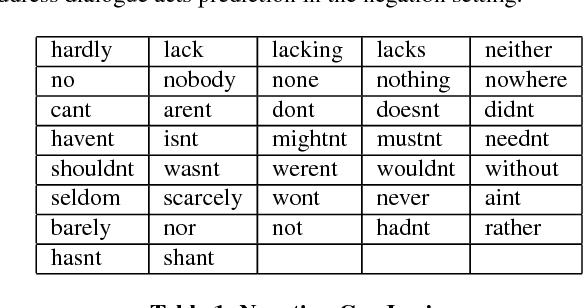
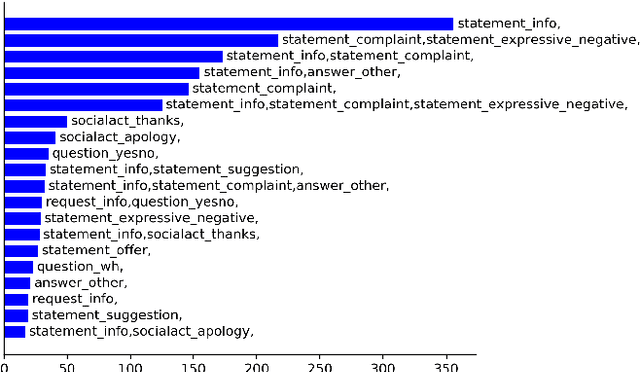
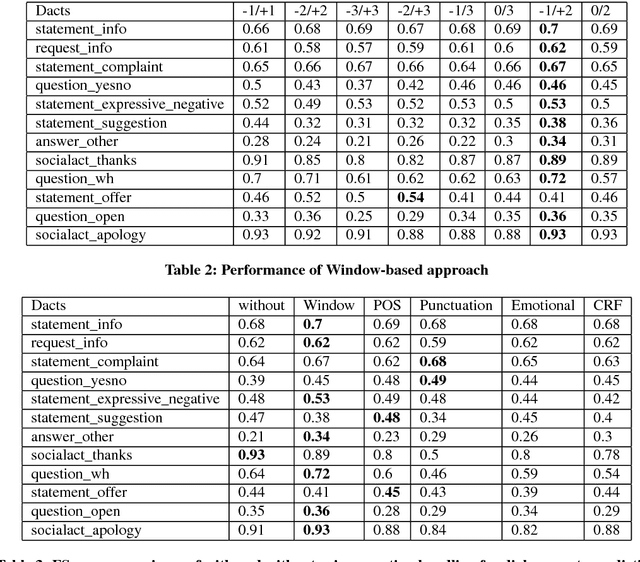
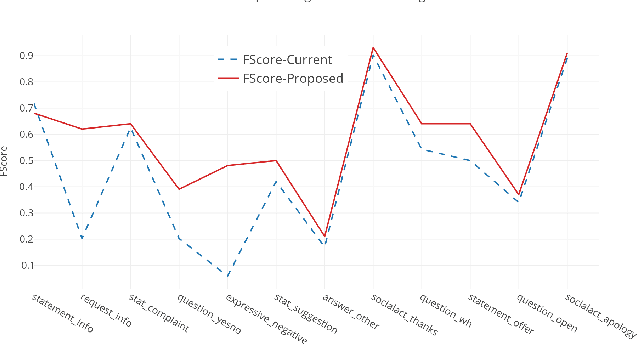
Abstract:In the last several years, Twitter is being adopted by the companies as an alternative platform to interact with the customers to address their concerns. With the abundance of such unconventional conversation resources, push for developing effective virtual agents is more than ever. To address this challenge, a better understanding of such customer service conversations is required. Lately, there have been several works proposing a novel taxonomy for fine-grained dialogue acts as well as develop algorithms for automatic detection of these acts. The outcomes of these works are providing stepping stones for the ultimate goal of building efficient and effective virtual agents. But none of these works consider handling the notion of negation into the proposed algorithms. In this work, we developed an SVM-based dialogue acts prediction algorithm for Twitter customer service conversations where negation handling is an integral part of the end-to-end solution. For negation handling, we propose several efficient heuristics as well as adopt recent state-of- art third party machine learning based solutions. Empirically we show model's performance gain while handling negation compared to when we don't. Our experiments show that for the informal text such as tweets, the heuristic-based approach is more effective.
"How May I Help You?": Modeling Twitter Customer Service Conversations Using Fine-Grained Dialogue Acts
Sep 15, 2017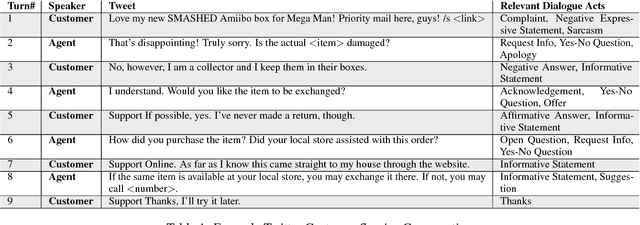
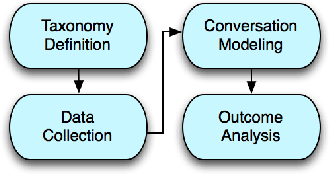
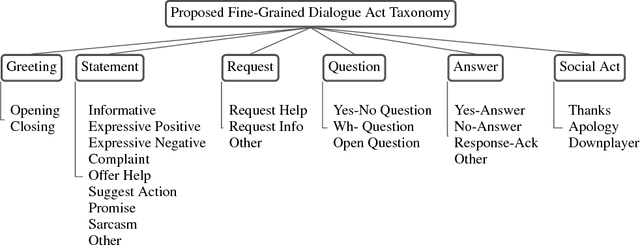
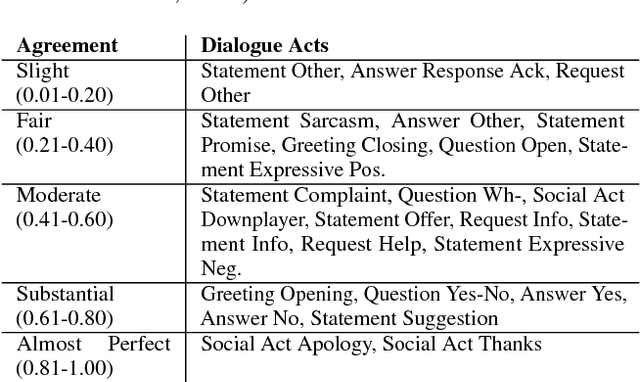
Abstract:Given the increasing popularity of customer service dialogue on Twitter, analysis of conversation data is essential to understand trends in customer and agent behavior for the purpose of automating customer service interactions. In this work, we develop a novel taxonomy of fine-grained "dialogue acts" frequently observed in customer service, showcasing acts that are more suited to the domain than the more generic existing taxonomies. Using a sequential SVM-HMM model, we model conversation flow, predicting the dialogue act of a given turn in real-time. We characterize differences between customer and agent behavior in Twitter customer service conversations, and investigate the effect of testing our system on different customer service industries. Finally, we use a data-driven approach to predict important conversation outcomes: customer satisfaction, customer frustration, and overall problem resolution. We show that the type and location of certain dialogue acts in a conversation have a significant effect on the probability of desirable and undesirable outcomes, and present actionable rules based on our findings. The patterns and rules we derive can be used as guidelines for outcome-driven automated customer service platforms.
PRIIME: A Generic Framework for Interactive Personalized Interesting Pattern Discovery
Jul 19, 2016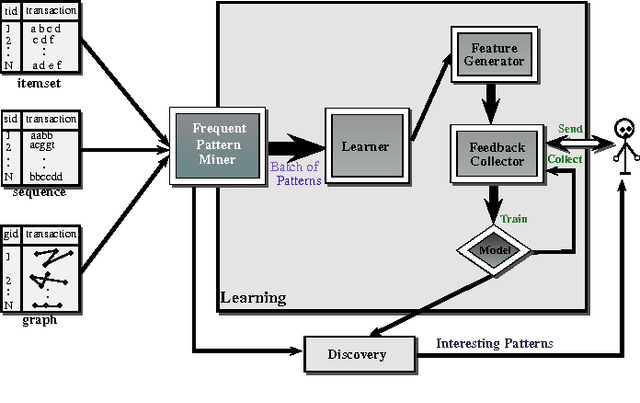
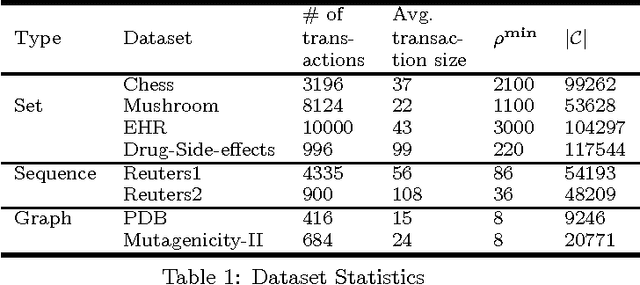
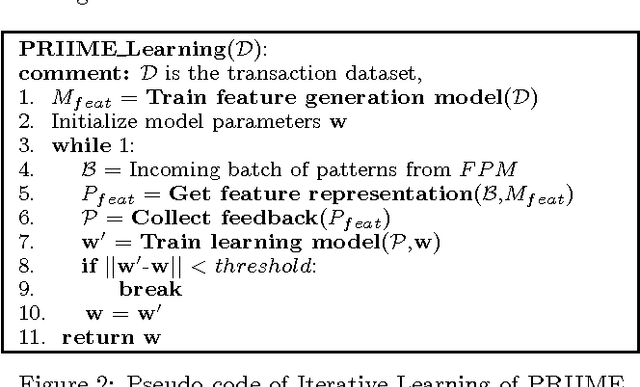
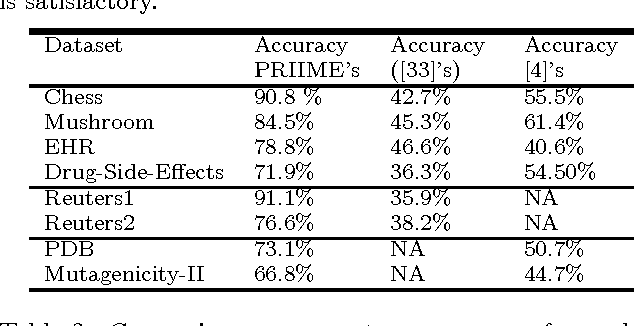
Abstract:The traditional frequent pattern mining algorithms generate an exponentially large number of patterns of which a substantial proportion are not much significant for many data analysis endeavors. Discovery of a small number of personalized interesting patterns from the large output set according to a particular user's interest is an important as well as challenging task. Existing works on pattern summarization do not solve this problem from the personalization viewpoint. In this work, we propose an interactive pattern discovery framework named PRIIME which identifies a set of interesting patterns for a specific user without requiring any prior input on the interestingness measure of patterns from the user. The proposed framework is generic to support discovery of the interesting set, sequence and graph type patterns. We develop a softmax classification based iterative learning algorithm that uses a limited number of interactive feedback from the user to learn her interestingness profile, and use this profile for pattern recommendation. To handle sequence and graph type patterns PRIIME adopts a neural net (NN) based unsupervised feature construction approach. We also develop a strategy that combines exploration and exploitation to select patterns for feedback. We show experimental results on several real-life datasets to validate the performance of the proposed method. We also compare with the existing methods of interactive pattern discovery to show that our method is substantially superior in performance. To portray the applicability of the framework, we present a case study from the real-estate domain.
 Add to Chrome
Add to Chrome Add to Firefox
Add to Firefox Add to Edge
Add to Edge